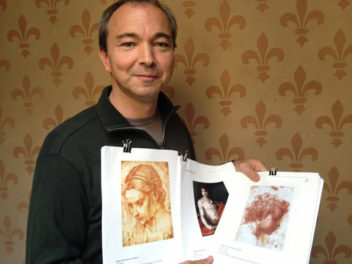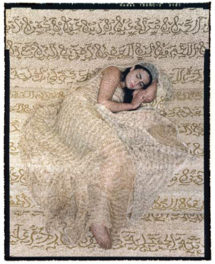
Lead preparator Rita Gomez attaches a triaxial accelerometer to an interior microclimate box to monitor shock and vibration.
As an assistant scientist at the Getty Conservation Institute and member of its Managing Collection Environments (MCE) initiative, I’ve been working alongside the Preparations team at the J. Paul Getty Museum and with couriers from the Museum staff to conduct an assessment of the environmental performance of the packing cases it uses for the transportation of cultural objects.
While the MCE initiative largely focuses on the control and management of collection environments in the museum setting, an object’s transient period between venues represents an extension of the museum environment. Respected for the quality of their cases, the Preparations team was also interested in verifying their performance in transit.
For this assessment, we’ve undertaken numerous in situ studies examining exterior and interior temperature, relative humidity, shock, and vibration conditions for a range of packing cases used by the Museum to transport artifacts. In addition, we’ve monitored multiple packaged artifacts or mockups during the same transit to directly compare case performance when subject to identical environmental input conditions.
While the bulk of this monitoring occurs during ground or air transits, we’ve given special attention to the so-called “first mile/last mile” transitions, as handling of packaged artifacts at either venue or intermediate junctions is often thought to pose added risk of damage.
I will be presenting this research at the 45th Annual Meeting of the American Institute for the Conservation of Historic and Artistic Works during the Collection Care session on May 30 in Chicago. A paper on the results of the study is expected to be published in 2018.
See all posts in this series »





From the photo it looks like your container design could cause a kind of avoidable damage referred to as the tandem cushion effect (TCE). In TCE two cushions in series will perform out of phase with respect to shock and vibration, e.g., under shock and vibration one cushion could start rebounding as the other is fully compressed periodically exposing the packed object to heightened impact. In the photo the black outer donut-style cushion and the inner white Ethafoam cushion are in series. Best to put all cushioning between the outer and inner boxes, increasing that cushion thickness as necessary. The ‘object’ being shipped and monitored here would then be fully encapsulated in Ethafoam 220 or other medium that cannot deflect under load.